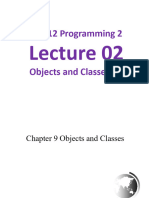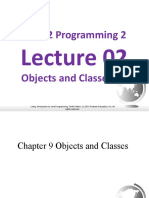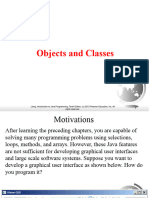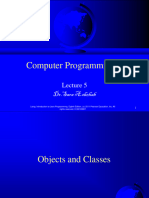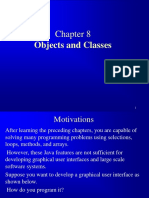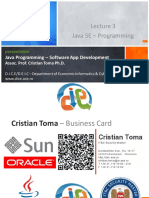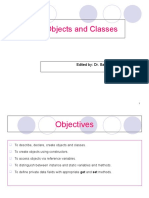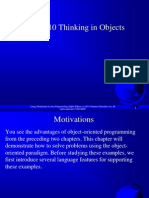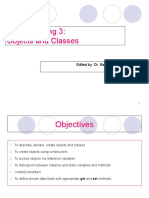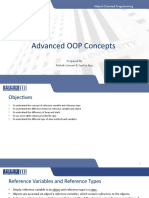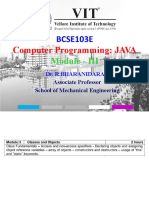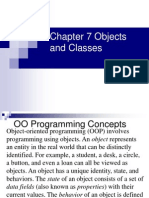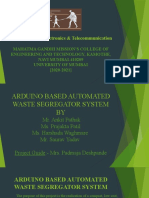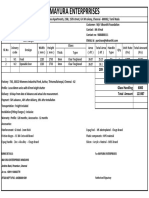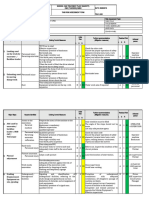0% found this document useful (0 votes)
8 views31 pages09slide Part1
The document covers the basics of objects and classes in Java programming, detailing how to define and create classes, use constructors, and access object members. It explains object-oriented programming principles, including the distinction between primitive data types and reference types, and introduces UML notation for class representation. Additionally, it discusses garbage collection and the importance of encapsulation in maintaining class data integrity.
Uploaded by
hazemmagdy025Copyright
© © All Rights Reserved
We take content rights seriously. If you suspect this is your content, claim it here.
Available Formats
Download as PDF, TXT or read online on Scribd
0% found this document useful (0 votes)
8 views31 pages09slide Part1
The document covers the basics of objects and classes in Java programming, detailing how to define and create classes, use constructors, and access object members. It explains object-oriented programming principles, including the distinction between primitive data types and reference types, and introduces UML notation for class representation. Additionally, it discusses garbage collection and the importance of encapsulation in maintaining class data integrity.
Uploaded by
hazemmagdy025Copyright
© © All Rights Reserved
We take content rights seriously. If you suspect this is your content, claim it here.
Available Formats
Download as PDF, TXT or read online on Scribd
/ 31
